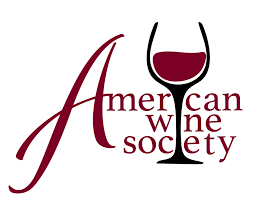America’s largest community of wine explorers
AWS News
October 2021 Volume 35, No. 3
IN THIS ISSUE
Full speed ahead for our upcoming conference
Get the latest info regarding itineraries and Covid precautions for the 54th Annual American Wine Society Conference.
Executive director’s message regarding the conference
David Falchek believes it marks a new beginning for a stronger, more capable, and more resilient organization.
Banfi headlines the AWSEF raffle once again
Its donation of Brunello di Montalcino highlights the raffle, and donations roll in for the silent auction — plus, read about the 2021 scholarship recipients.
Last call For the Amateur Wine Competition
Time is winding down to register and enter wine or mead for judging.
Colleen Reardon joins AWS as member service manager
She features a background in nonprofits, marketing, and communications.
2021 National Tasting Project enters the home stretch
The final report for 2021 will be available online by December.
Record number of students take WSET qualifications
Global wine, spirits and sake professionals and enthusiasts embrace WSET qualifications during COVID
Winemakers’ corner: Back to the future?
Many wineries today, especially in Europe, are returning to the use of ancient winemaking techniques.
Traveling to wine country during a pandemic
It’s possible, but planning and patience are key ingredients.
Chapter events
Your fellow AWS members have been busy; read what they’ve been up to recently.
Full speed ahead for our upcoming conference
The 54th Annual American Wine Society Conference is only a few weeks away, with over 500 members attending. It’s shaping up to be another amazing event!

Expect an e-mail toward the end of October with more information on conference specifics. This should answer many of your questions about arrival and checking in at Harrah’s, where to get your registration packet, the dress code, and so on.
If you’re a conference attendee, you also should look for an email regarding the need for volunteers. As you know, we cannot run this conference without our attendees’ assistance. Please look over this form when you receive it and find a few places where you can assist. Many hands make light work.
Itineraries are complete
You can log onto your AWS account and see your session assignments for the Conference. We are happy to say that everyone received most of their first choices.
Generally, these itineraries should not change, but they could, should there be an error or a room change. So, be sure to rely on the personal itinerary that will be provided when you check in at the registration desk and use that as a guide to your conference experience.
You can find your session assignment this way:
- Log onto your AWS Profile.
- Click on “Accounts & Settings” under “Welcome …” at the top of your screen.
- From the tabs on the left, click on “Payments & History.”
- From a new top menu, select “Event Registrations.”
- You should see your most recent conference registration near the top, and you may click on it.
Also, if any of your AWS friends feel left out, conference registration has re-opened and we have a few dozen spaces available! If you still haven’t registered, you can do so here.
Covid precautions will be evident
Covid concerns are on everybody’s mind. As Executive Director David Falchek outlined last month in an email to conference attendees, we want to address your concerns and relay to you what’s being done to minimize any risk to you. To recap information about the venue and our steps to address concerns:
- Green building. Harrah’s Waterfront Conference Center is a spacious, modern building certified by the US Green Building Council for Leadership in Energy and Environmental Design. The convention center meets or exceeds LEED’s high standards for indoor air quality and ventilation.
- Exclusive use of space. Our group will have exclusive use of the center’s second floor for the duration of the conference, thereby reducing or eliminating non-AWS traffic or passers-by. In addition, guest room towers DO NOT require crossing the gaming floor. Elevators are a short walk from the center entrance.
- Vaccination rates. New Jersey has one of the highest vaccination rates in the nation. Harrah’s requires any unvaccinated employee to wear a mask when on duty.
- Harrah’s commitment. Harrah’s continues to host large events. Harrah’s operator, Caesar’s Entertainment, reviews and updates its Covid mitigation and hygiene protocol regularly.
- Session spacing. Session rooms in Harrah’s spacious facility are larger than we would typically need. We will use that space to set up session rooms to spread out tables and individual settings. You’ll probably find conventional spacing in the front of a session room, and expanded spacing in the back half of a room; choose a place of your preference.
- Walk-around tastings. Pre-function areas will have expanded seating options for attendees while maximizing space around our industry partners who are pouring at the New Jersey Welcome Reception and the Showcase Tasting.
- Masking. Following the recommendations of health officials, we suggest that attendees mask up in common areas when you’re not in meals or sessions. We’ll have masks available at the registration desk. Staff and key volunteers will observe this rule. Masks and disposable gloves will be available for room volunteers.
- Deep sanitation. Harrah’s will sanitize all Conference spaces before use and overnight to ensure we start each day with clean, hygienic spaces. Also, Harrah’s will have hand sanitizer available throughout the facility and outside session rooms.
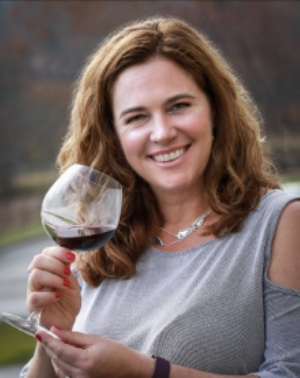
Conference Chair
Keep in mind that that large, in-person meetings are happening safely throughout the country. As you know, all conference attendees agreed to the Duty to Self Monitor and Covid Attestation upon registration.
Even so, we recognize that our attendees will have a range of comfort levels. We encourage you to engage with other conference-goers as you feel is appropriate under the circumstances.
As we suggested to local chapters since early 2020, you may want to congregate with people you know — holding back the hugs and maybe not sharing that glass of wine. The most important thing is to respect each other’s feelings and individual approaches while we enjoy being together and learning more about wine.
Finally, even with all this planning, we still may encounter some situations that require us to adapt in the moment. We appreciate your patience and understanding in advance.
I am extremely excited for this year’s Conference and cannot wait to see you all in November at the Harrah’s, Atlantic City.
Cheers, Diane Meyer
Looking forward to a live conference once again
In a few weeks, American Wine Society members from around the nation will be together for the first time in more than a year.
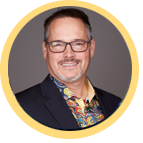
Executive Director
The simple joy of sharing time and space together has renewed value after the world changed in March of 2020, because the crisis struck at the heart of what the AWS does: bring people together to enjoy and learn about wine.
Showing great resourcefulness, chapters found ways to meet safely, either virtually or in person. On a national level, we administered a certification program and offered digital tasting and learning opportunities, and even offered a free virtual conference in 2020.
I still remember our first digital happy hour during the lockdown with our friend Meaghan Frank. Even though our AWS friends were in little boxes on our screen, to see them at home and happy with glass in hand was priceless.
Focused on keeping conference-goers safe
At our in-person conference in Atlantic City, we’ll collaborate with Harrah’s Resort regarding how we will use the space.
As Conference Chair Diane Meyer detailed in her article previewing the conference, Harrah’s adopted a stringent cleaning and sterilizing protocol for the entire hotel, including some specific to our meeting space at the Waterfront Conference Center, a modern, LEED-certified building.
Our attendees have made a COVID attestation and accepted a duty to self-monitor. We remain committed to following requirements from local health officials and to hosting a safe and healthy event.
Every year the AWS conference brings the wine world to you. The 54th Annual Conference also marks a new beginning for a stronger, more capable, and more resilient American Wine Society.
We will raise glasses together. After the last two years, I think we deserve it!
Banfi Brunello di Montalcino Raffle highlights AWSEF fundraising

Again this year, Banfi Wines has very generously donated a large-format bottle of its award-winning Brunello di Montalcino for the Educational Foundation to raffle.
Just as we did last year (with a virtual conference), we will hold the raffle the week prior to conference. Look for an email coming soon with full details about how to purchase raffle tickets, which again will be $10 each. The email will detail several options for purchasing tickets.
The winner in 2020 was Tim Suttles, representing a group of AWS members in Alabama who agreed to each purchase at least five tickets and who shared the bottle they won. The group organized a several-course dinner at a local restaurant in Huntsville, Alabama, in August and shared different Italian wines during the meal, with the Banfi Brunello di Montalcino accompanying the main entrée.
No one happened to have a wine cradle to accommodate a 5-liter bottle so, in the true spirit of Rocket City, one member of the group (Tim Coddington) engineered a robotic cradle. The robot may have competed with the bottle as the star of the evening!

The bottle arrives 
In its box 
Into the cradle 
Ready to pour 
Checking the cradle 
Thank you to Banfi 
Perfect pour every time 
Measured exactly 
Cheering the cradle maker 
The dead bottle leaves
Silent Auction
Donations for the 2021 Silent Auction are coming in, and we greatly appreciate your support! If you plan to bring an auction item with you to the conference, please let Christine Murphy (vpcorporatedev@awsef.org) know so we can have our paperwork ready.
Introducing the 2021 AWS Educational Foundation Scholarship Recipients
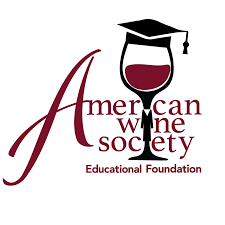
Below is information about the seven scholarship recipients with brief information about the specific research they are each doing. If you’d like more detailed information about any of this research, please contact me (president@awsef.org), and I’ll be glad to forward their application essay with much more detail.
Evelyn Alvarez-Mendoza, master’s candidate at California Polytechnic State University, San Luis Obispo; North Alabama Chapter Scholarship.
My graduate research work is concentrated on investigating fungicide resistance of grapevine-associated pathogens which primarily include Erysiphe necator (powdery mildew) and Botrytis cinerea (botrytis bunch rot). The first major component of my project is focused on identifying the prevalence of fungicide resistance in powdery mildew populations in the Central Coast region of California. The second component of my study explores the rate of fungicide resistance accumulation in powdery mildew pathogen populations. The third chapter of my research is based on profiling fungicide resistance in B. cinerea populations on wine grapes in the Central Coast to various commercially available fungicide active ingredients. As one of the first studies conducted on powdery mildew and botrytis fungicide resistance on wine grapes in California, I believe the results from my research are vitally important for enabling the development of effective chemical control programs that growers in this region can implement in their vineyards for optimal disease management.
Sarah Bogenrief, master’s candidate at North Dakota State University; Banfi Scholarship.
My current thesis research deals with evaluating and monitoring bud cold hardiness of established vines throughout dormancy using differential thermal analysis (DTA). DTA is a tool used to monitor cold hardiness using dormant bud and cane tissue and is necessary in understanding how grape cultivars respond to temperature and photoperiod cues. Previous reports of hardiness thresholds are being questioned, as our observations are reporting much lower killing temperatures for grape buds. Tracking acclimation of vines into dormancy and de-acclimation out of dormancy is important in understanding temperature and photoperiod cues, in relation to each cultivar used for production in this region. This research is pivotal for grape and wine production in North Dakota, as it influences breeding decisions moving forward as new cultivars are developed for our climate.
Hannah Charnock, Ph.D. candidate at Brock University, Ontario, Canada; Cleveland, Ohio, Chapter Scholarship.
My thesis research is centered on investigating a specific sub-set of flavor-reactions, known as the Maillard reaction (MR), during sparkling wine ageing. The MR is one of the most important flavor reactions in food and beverage production where it generates a wide range of compounds through multi-step reactions between amino acids and sugars. The long-term objective of my research is to characterize the formation of MR products in aged sparkling wines, as well as their sensory contribution. Specific chemical and biological factors are of key interest to my thesis research, where different sugar-types, metal ions, and yeast strains may influence the physicochemical environment for the MR to proceed. Specifically, I hope to elucidate the impact of different sugar-types that are introduced at distinct sparkling wine production steps.
Bailey Hallwachs, master’s candidate at Washington State University; East Tennessee/Smoky Mountains AWS Chapter Scholarship.
I am researching the Grapevine Red Blotch Virus (GRBV), a significant virus of grapevines that is spreading rapidly through commercially important vine stock and negatively impacting wine and table grape industries. GRBV disrupts proper berry development and ultimately taints grape quality (color, flavor, aromatic compounds) of highly prized elite (Vitis vinifera L.) cultivars. The research I am currently working on is to analyze the movement of this virus throughout grapevines anatomically on a cellular level.
Lauren Marigliano, master’s candidate at University of California, Davis; Thomas Jefferson, Kentucky, Chapter Scholarship.
Currently, California’s premium grape-growing regions do not have any methods for mitigating deleterious effects of excessive heat and light exposure associated with climate change on grape quality. With excessive heat and droughts becoming more frequent, maintaining the production of premium quality grapes and wine may become increasingly challenging. In preparation for climate change conditions, my research aims to evaluate the vulnerability of Cabernet Sauvignon grape berries to solar radiation overexposure using overhead polyethylene shade films in an effort to mitigate heat and water stress on grapevines. This project is separated into two major components the first of which focuses on elucidating the impact of selective solar exclusion via overhead shade films on vine physiology and grape quality parameters. The second component of this study is to produce wine from the shade film trial. The primary goal of this second component is to determine if the impacts of the shade films on grape juice composition transfer into the wine during and after vinification. The expectation from this component of the project is to see a correlation and carry-over between the flavonoid profile from the berry skins at harvest and the final wines under each shading treatment.
Portiaa McGonigal, Ph.D candidate at University of British Columbia; NE PA Regional Scholarship.
Crown gall disease is the most economically important bacterial grapevine disease in grape-growing regions around the world and is most severe in regions that experience winter freezing. The disease is caused by the vascular bacterial pathogen Allorhizobium vitis, which can be introduced into a vineyard via propagation material and persists in the soil on decaying plant debris for at least two years after diseased vines are removed. Therefore, in my current university research, I am testing several potential management strategies against grapevine crown gall through field and greenhouse trials, as well as surveying what A. vitis strains are present in the Okanagan Valley of British Columbia. Soil likely serves as the primary inoculum source of A. vitis for healthy grapevine roots. When A. vitis-free vines are planted into infected soil, the pathogen enters the vine through root wounds and becomes established within the vascular system. One of the objectives of my current research is therefore to assess different compost as a management strategy against crown gall disease in the field and assess the effect of compost treatment on overall grapevine performance. Another promising approach to commercial disease management against grapevine crown gall is biological control. Therefore, a second objective of my current research is to identify potential biological control agents (BCAs) that exhibit consistent inhibitory activity against several tumorigenic strains of A. vitis. Since the onset of this study, five potential BCAs have been identified via in vitro screening assays and will be tested in planta using two different inoculation methods (stem needle prick and root soak) through several greenhouse assays.
Demetra Perry, Ph.D. candidate at Cornell University; Lehigh Valley Chapter Scholarship.
I research the selective deodorization of Concord grape juice, its subsequent chemistry, fermentation kinetics, and wine volatile profile in order to produce a premium red wine from New York’s #1 planted grape that is currently grown in abundance with diminishing demand. Research on wine faults has been an active area of investigation for decades. Treatments for volatile acidity, ladybug taint, smoke taint, and more have emerged for wine fault remediation as a result of years of painstaking research. Whereas these treatments target remediation post-fermentation, my research focuses on eliminating undesirable aromas pre-fermentation to create a “blank slate” on which yeast can write. The product that results is a red wine reminiscent of a young Beaujolais with aromas of raspberry, cherry, and a hint of banana; a wine that few would guess was fermented from Concord grape juice.
Last Call For the Amateur Wine Competition
Time is winding down to the competition! Amateur winemakers should register by October 8.
You’ll have a week from that date for your wines to arrive at our receiving point, Bellview Winery. (This means you have until October 15 for your wine to be delivered.) Again this year, you need to enter only 750ml (typically one bottle) of each wine/mead.
Remember that anyone who is a member of a local chapter benefits from the discount that AWS members receive when entering the competition.
Vince Williams, chair of the Amateur Wine Competition
Colleen Reardon joins AWS as member service manager
As mentioned in the last issue of AWS News, there’s been a passing of the baton in the National Office.
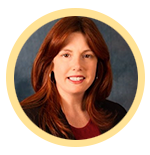
Member Service Manager
Colleen Reardon joined the staff in September, bringing a great deal of nonprofit, marketing, and communications experience to the position.
Most recently, she was a marketing manager for an international packaging equipment manufacturer and an events and marketing manager for regional nonprofit organizations. Previously, she worked in magazine publishing in New York City and northern Virginia, where she learned design and desktop publishing. She also volunteered previously as a WOOFER (Willing Worker on Organic Farms) in New Zealand for 4 months, helping gardeners as small as those with a family plot in the backyard to a farmer’s large apricot orchard — even working on a vineyard for a little while!
Colleen has a bachelor’s degree in marketing from the University of Scranton, a certificate in website design from Penn State University, and has completed training to sit for the Pennsylvania real estate salesperson test.
“I love my hometown of Scranton, Pa., and I enjoy antiquing, music, travel, swimming and spending time with family and friends,” Colleen said. “I look forward to meeting members at the upcoming conference in Atlantic City, and I am very excited to learn more about wine.”
2021 National Tasting Project enters the home stretch
The final report for 2021 will be available for viewing on the AWS Website by December. The deadline for submitting your chapter’s results is October 4. You can do so by sending them to ntp@americanwinesociety.org.

It has been a pleasure serving AWS these past few years, and thanks again to all the NTP committee members and chapters who have participated in NTP tastings. Your support has been appreciated.
I look forward to future National Tasting Projects, compiled by the new NTP chair, Michael Blake.Best of luck to Michael moving forward, I know he has plans to raise the bar!
Sharyn Kervyn, outgoing NTP Chair
Record number of students take WSET qualifications
The Wine & Spirit Education Trust (WSET), the largest global provider of wine, spirits and sake qualifications, reports that 108,584 students took a WSET qualification in 2020-2021 through the organization’s global network of course providers. This represents a 12% increase from 2019-2020 and exceeds the previous record of 108,529 candidates in the organization’s 50th year (2018-2019).
The United States remained WSET’s top market, registering over 20,000 candidates and showing 23% growth compared to 2019-2020.
“I am humbled that, thanks to the dedication and support of our global network of course providers, more people than ever before in a single year have been able to take a WSET qualification,” said WSET Chief Executive Ian Harris.
Broaden your knowledge

As an approved program provider, the AWS offers WSET Levels 1, 2 & 3 Award in Wines. These courses expand and complement AWS’s long track record of educational offerings to members.
The wine courses combine several weeks of on-line study and culminate with an in-person exam. All course materials and exam fees are included in the cost of the course. These courses are available only to AWS members, but non-members can join AWS as part of their course registration.
If you have considered pursuing WSET certification, consider making that journey with the AWS. For more information, email directoreducation@americanwinesociety.org.
Ancient Wine: Back to The Future?
How old is wine? One can imagine a Neanderthal rooting around at the back of the cave discovering that some stored fruit was now a bit fizzy, rather like the last dregs of apple cider at the back of my refrigerator. But is this really wine making, or simply accidental wine? What if someone simply allows grapes to naturally ferment, puts in no additives, and bottles it. We would call that “natural fermentation” and “natural” wine. The ancients would know no other method, sans the bottle.

Discoveries are ongoing, but wine has been discovered in vessels more than 8,000 years old. This precedes the pyramids. And we know that the dried contents found in these clay pots was wine because of the unusual properties of grape wine: the presence of tartaric acid, an acid rarely found in quantity in other fruits. And no, these finds were not in France or even in Roman Italy. They were found in Eurasia, in a region that is now Turkey and Georgia. Patrick E. McGovern, a research scientist and molecular archaeologist, also believes that 99% of the world’s wine today is made from the descendants of one grape species that grew wild in that part of Eurasia, Vitis Vinifera Sylvestris. This grape species is the Lucy of modern vinifera. From Georgia to the Euphrates Valley, to Lebanon, ancient Egypt, Crete, Greece and then to ancient Rome, winemaking spread along with the daughters of this grape throughout the ancient world and into our world today. Many wineries today, especially in Europe, are returning to those ancient techniques.
Have you ever wondered what ancient wine tasted like or how it was made? Perhaps, if Sylvestris is the scion of our modern grape varietals, we may be able to find in some of the Eurasian grapes some semblance of the taste of ancient wine. One grape grown in Georgia is known to many of us and especially Dr. Konstantin Frank: Rkatsitelli, also grown in the Ukraine. It’s now increasingly grown in the Finger Lakes of New York State along with Saperavi, a dark skinned red wine grape. Did the ancients enjoy the crisp green apple flavor of the Rkatsitelli or the smoky earthy plum flavors of Saperavi? Certainly, the high acid of the white and the strong tannins of the red would help keep the wine sound.
Keeping a wine sound is a problem that we still face. But for the ancients, the options were few. We moderns can add potassium metabisulfite, a preservative found naturally in fermented wine, but in small quantities. As an antioxidant, it prevents spoilage microbes from getting a foothold and keeps out excess oxygen, retaining freshness. The ancients did not have SO2. Still, they searched for such a preservative and found it in tree resin. Who would know that pine tar is a preservative? They knew that in Babylonia, Pharaoh’s Egypt and in ancient Rome. Once thought to be a way to seal wine jars, it is now realized that it had additional purpose. Even Pliny (the Elder if you’re counting) wrote about the wonders of pine resin. It gives me a new appreciation for Frankincense and Myrrh. Were the Magi winemakers too?
Perhaps then, ancient wine tasted more like some of the resinated wines of Greece, still made today. Would Pliny recognize Retsina?

Keeping wine sound also needed a sealed container. The ancients had only amphorae, but they certainly made the most of those various jars. The Georgians had Qvevri. The Phoenicians the Torpedo. The Agean Chian amphora also came with its own promotion, markings that told consumers the origin of the wine and what to expect inside: essence of dates and pomegranates no doubt.
Just as we think of wine label “chatter” as new, so too do we think of wine labeling laws as a modern construct. Wine labels go back more than 2,000 years in Egypt, with the clay jars imprinted by round cylinders listing the general vintage, vineyard and a “wine rating.” Needless to say, it wasn’t based on the 100-point scale. And wine writing is not so modern at all. Lists of good vintages were left in ancient tombs, so the occupant would know the best vintages to order in the afterlife.
Even amphorae have made a comeback. In Georgia, in Eurasia, winemakers are returning to terracotta wine vessels. Some Qvevri so large they require a ladder to get in and out of. At the Somerset Vineyard in Temecula, California, wine is fermented in tall amphorae, described as like something out of a Hollywood set. Just recently a fellow winemaker showed me pictures of a winery in the Chianti Classico region of Tuscany where they ferment their wine in terracotta “eggs.” Luckily, this trend has not caught on in the retail side of the business, as terracotta is fragile, bulky, and somewhat porous, not to mention taking up a lot of space under the stairs.
I think fermenting in terracotta amphorae would be fun. Terracotta is natural and renewable. And after fermentation you can drill a hole just above the sediment, as was done in ancient times, to rack the wine off its lees, leaving the lees in the pointed bottom. It you’re thinking of trying this, here’s a winemaker tip from the ancients: coat the inside of the jar with beeswax to stop de-acidification and weakening of the vessel. Or better yet, just wait, as there will probably be a winery near you adopting this method. You can let them do the work.
Who would have thought a few years ago that the future of modern winemaking would be 8,000 years old? Who knew that so much of ancient winemaking and wine trade was so modern? It’s like the old song: Everything Old is New Again!
Traveling to wine country during a pandemic
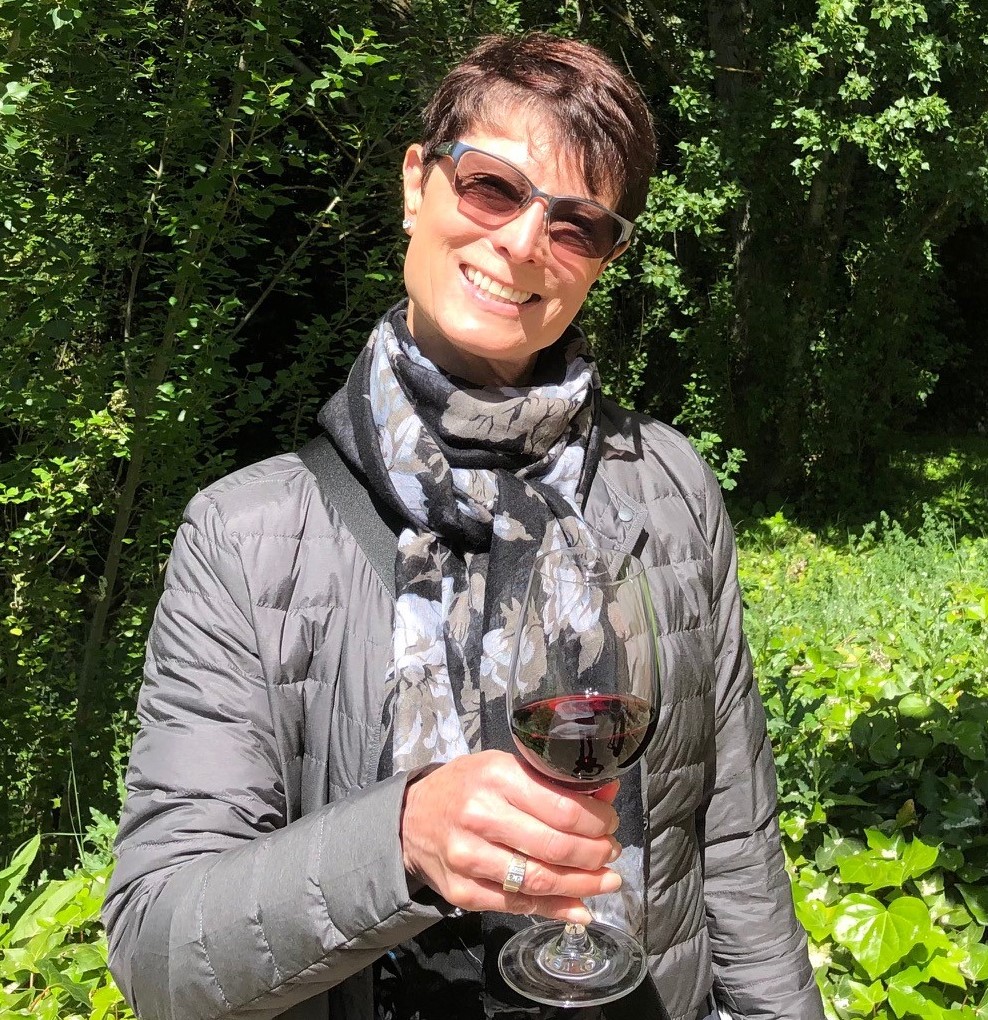
If your travel plans were interrupted during the last 2 years, don’t give up hope — but planning your trip requires a lot of thought regarding safety and efficiency. It helps to start with a baseline of criteria for the trip, and employ patience as you go.
Wine travel blogger Michelle Bainbridge, an AWS member who is on the board of the Denver, CO, chapter, recounted how she and friends planned and executed a trip to Paso Robles, California. Her two-part series features essentials for planning your trip and the group’s itinerary.
Chapter Events

The 50 Shades of Grapes Chapter (NJ) held the NTP tasting-Wines of Bosnia at Wanda’s in Haddonfield. All the wines were well received and were paired with a wonderful 7-course menu by Chef Anthony. Top 3 wines were:
- Deep Red Cuvee (1)
- Stone Cuvee (2)
- Tamjanika (3)
The Fleur-de-Lis Chapter (KY) held its annual “share your cellar tasting” with all members attending on July 17, which was hosted by Owen and Pat Wetzel. Five wines were poured and given to the members for tasting. Price for the wines is not included as these wines can no longer be purchased at original price or are simply no longer available. There were indeed some priceless gems shared to taste. Results are listed below.
- 2006 Col Solare, Columbia Valley, WA, (1)
- 1988 Dunn Vineyards Cabernet Sauvignon, Napa Valley, CA, (2)
- 2005 Nicolas Catena Zapara, Mendoza, Argentina, (3)
- 2011 Tablas Creek Vineyard Panoplie, Paso Robles, CA
- 1998 Dunn Vineyards Cabernet Sauvignon, Napa Valley, CA
For the first time since March 2020, the Hammonton Chapter (NJ) met in person on July 18. Over the last 15 months they had used Zoom to keep in contact with members to discuss wines. For the first in-person gathering, they decided to visit a local winery and met at the White Horse Winery in Hammonton. Two of the members (who are regulars at the winery) arranged for the winemaker, Edward, to speak with them about winemaking. Edward grew up in Bordeaux and was a pleasure to listen to.

Among the wines enjoyed by the group were a 2019 Estate Barrel Fermented Chardonnay, a 2020 Estate Reserve Rosé, a 2020 Estate Albariño, a 2018 Chambourcin, and a 2018 OCP Cabernet Franc. Along with the cheese and charcuterie boards available at the winery, the Brotherly Love Cheesesteak Eggroll food truck was on site. They highly recommend the Italian (pulled pork, broccoli rabe, garlic, and sharp provolone) if you ever come across it!
Approximately 80 members of the Heritage Hunt (VA) Chapter held their first “normal” wine tasting as a “Sip and Mingle” event in the clubhouse ballroom in July. Attendees sampled up to 8 different wines from around the world at their leisure while getting reacquainted with club members or even meeting new ones (Yes, they had some people join since they last got together in early 2020). Here are the wines that were presented:
- Baron Aime Cremant de Bourgogne Brut, NV (France) ($20)
- Babylon’s Peak Chenin Blanc, 2020 (South Africa) ($17)
- Kennedy Point Sauvignon Blanc, 2019 (New Zealand) ($22)
- Hugl Zweigelt Rose, 2020 (Austria) ($15)
- Alain de la Treille Chinon, 2019 (France) ($25)
- Meridia Primitivo, 2018 (Italy) ($12)
- Vina Siegel Special Reserve Cabernet Sauvignon, 2018 (Chile) ($16)
- Thorn Clarke Shotfire Shiraz, 2019 (Australia) ($26)
The Keuka Chapter (NY) met on Sunday, August 8, at the Rushville Fire Hall, hosted by Bill and Jo Farnham (chapter co-chairs.) Twelve members enjoyed a social period with wine and appetizers brought by the guests. The formal tasting was of Sauvignon Blanc wines from New Zealand and the Finger Lakes (NY), and a congenial dinner of beef stroganoff with side dishes brought by the guests followed. Among the wines, two tied for favorite. The wines:
- Dr. Frank Sauvignon Blanc, 2019, Hammondsport, NY (Finger Lakes), $19 (1-tie)
- Starborough Sauvignon Blanc, 2020, Marlborough, New Zealand, 12.5% alcohol, $11 (1-tie)
- Cupcake Sauvignon Blanc, 2017, Marlborough, New Zealand, 12.5% alcohol, $10
- Nobilo Sauvignon Blanc, 2019, Marlborough, New Zealand, 12.5% alcohol, $13
- Keuka Lake Vineyards Sauvignon Blanc, 2019, Hammondsport, NY (Finger Lakes) 13.9% alcohol, $19
- Hector Wine Company Sauvignon Blanc, 2020, Hector, NY (Finger Lakes), 13.8% alcohol, $14
Myrtle Beach (SC) Chapter met July 15 for New Zealand Passport-Beyond Marlborough presented by Chair and co-chair Richard & Mary Berezinsky to 31 members/guests. They tasted wines from 5 of NZ’s 10 wine regions and discovered how much

Sauvignon Blanc & Pinot Noir (the most widely planted grapes) could differ from one area to another.
- 2019 Innocent Bystander Central Otago Pinot Noir, $20 (1)
- 2020 Mt. Beautiful Sauvignon Blanc, $23 (2)
- 2020 Kumeu River Village Chardonnay, $23 (3)
- 2020 Te Mata Estates Sauvignon Blanc, $18
- 2020 Allan Scott Sauvignon Blanc, $12
- 2020 GreyRock Sauv. Blanc Rose, $15
- 2018 Cottesbrook Pinot Noir, $16
- 2019 Oyster Bay Pinot Noir, $11
The Northampton (PA) Chapter held a very belated NTP tasting at the home of Alicia and Marna Hayden. The tasting consisted of the most popular wines from Washington State. The winner was 2015 Chateau St. Michelle Cold Creek Cabernet Sauvignon!
On July 25, the North Wake (NC) Chapter met at Lynch Creek Farm in Kittrell, NC, for an afternoon of wine and pizza. In a reversal of the usual practice, members brought their own wine—their favorite pizza wine—and the chapter provided the food. Nineteen members and guests attended. A portion of the cost of attendance was donated to the Ben Franklin Society, which promotes educational, cultural, and economic development in Franklin County, NC.

Jay Davis conducted a “name that grape” blind-tasting exercise of 3 whites and 3 reds. Attendees sampled each wine and guessed the grape and the region. Renee Palmer got the most correct answers and received a bottle of Riesling from AWS founder Dr. Konstantin Frank’s winery. The “reveal” of the wines was interesting and provoked discussion. The afternoon ended with excellent pizza and salad, served by Bob Radcliffe of Lynch Creek Farm.
The Ocean Isle Beach (NC) Chapter enjoyed the Wines of Illyria (Croatia and Bosnia) at the Silver Coast Winery in Ocean Isle Beach. The evening began with the regular Meet and Greet followed with a welcome and introduction from our OIB AWS co-chair Stan Barwikowski.

The presentation opened with the 14-minute video by Aaron Mandell on Tips for tasting wine and using the AWS Wine Evaluation Chart. It also was a helpful reminder on how to judge the wines. Co-chair Stan Barwikowski reviewed the history of the area, types of grapes grown and the unique elements of the coastal and continental wine regions.
The tasting covered 7 of the 12 Illyrian wines, which many thought were simply amazing. The judging was not performed blind as had been the case in previous years. A variety of meats, cheeses, grapes, breadsticks, and an Oreo java chip cookie. Many were amazed at how well the java chip cookie paired with some of the wines.
The Piedmont Wine and Vine Chapter (SC) met on August 22 outdoors at the residence of John and Alice Claggett in Spartanburg. Because of the coronovirus last year, they did not do the Washington State National Tasting Project. Luckily all of the wines they tasted were available locally. The wines were scored by the 28 people in attendance and compared to the AWS average score. The prices were not revealed until the end so that it would not be a factor in the ranking. The chapter generally ranked the wines slightly higher than the average national scores.
- 2016 Chateau Ste Michelle Cold Creek AVA Cab Sauvignon, $31 (1)
- 2017 Born of Fire the Burr AVA Cabernet Sauvignon, $20 (2)
- 2017 H3 Horse Heaven Hills Merlot, $12 (3)
- NV Domaine Ste Michelle Brut, $13
- 2018 Chateau Ste Michelle Eroica Riesling, $19
- 2018 Bernard Griffin Chardonnay, $17
- 2017 Columbia Valley Intrinsic Red Blend, $18
The San Luis Obispo (CA) Chapter took a trip to select area wineries of The Central Coast. Rag Tag, Piedra Creek and Saucelito Canyon were visited by the members.
The Shallotte Chapter (NC) hosted a face-to-face outdoor meeting on July 14.There were 13 members and 1 new potential member present. The topic was Chilling Summer Wines from around the world. This included Rosé, Albariño, Gamay, Zweigelt (Austria), Cinsault, Blaufränkisch (Austria), and a Ripasso from Italy.
The group learned the many varietals that can be consumed during the summer months along with the serving temperature ranges of the different wines. — from cold (45) to medium (65). The ratings of the wines in order of popularity were:

- 2020 Domaine Dupeuble Pere Et Fils Beaujolais Nouveau 2020 Karen Birmingham Rosé of Pinot Noir (1)
- 2019 Clos Delfines Albariño (2)
- 2019 Birichino Vineyard Cinsault 2017 Masi CampoFiorin IGT (Rippasso)(3)
- 2017 Judith Beck Winery Blaufränkisch
- 2020 Karen Birmingham Rosé of Pinot Noir
- 2019 Clos Delfines Albariño
- 2019 Birichino Vineyard Cinsault 2017 Masi CampoFiorin IGT (Rippasso)
- 2017 Judith Beck Winery Blaufränkisch
The Shallotte (NC) Chapter also held a face-to-face outdoor meeting on September 8 with 12 members present. The topic was “Never Underestimate Costco.”
The group tasted 7 wines, 2 Prosecco’s (one being a Rose), a Sauvignon Blanc from New Zeland, a Chardonnay from California, a Chianti Classico from Italy, a Rioja from Spain and a Cabernet Sauvignon from Alexander Valley.

The goal of the meeting was to introduce the Kirkland brand of wines and the marketing strategy of Costco. Costco has over 800 warehouses in 11 countries with an average size of 145,000 square feet. Costco is the largest wine retailer in the US with a rolling inventory of 100-200 wines at any given time. The ratings of the wines in order of popularity were:
- 2016 Kirkland Reserve Rioja (1)
- 2020 Kirkland New Zealand Sauvignon Blanc (2)
- 2018 Kirkland Alex Valley- Cabernet Sauvignon (3)
- 2020 Kirkland Italian Prosecco
- 2019 Kirkland Sonoma Valley Chardonnay
- 2018 Kirkland Classico Reserva Chianti
- 2020 Kirkland Italian Prosecco Rosé
On August 26th, The Syracuse (NY) Chapter celebrated its first in-person event at Once (Spanish for 11, a nod to the 11 Finger Lakes). Once, an architecturally stunning and modern space, is located on the west side of Seneca Lake. It opened in April 2021 as a venue that features unusual and often hard to find Finger Lakes wines from a select group of wineries. Antonio Arias (founder & owner) led 15 members through a tasting titled “Untrodden Finger Lakes,” which paired 4 cutting-edge style Finger Lakes wines with charcuterie & cheese focused plates. The wines featured were:
- NV Hosmer Naomi Riesling (100% Riesling and slightly fizzy- about 1.5 atmosphere)
- 2017, Living Roots Riesling-Traminette (62% Riesling & 38% Traminette)
- 2020, Dr. Frank Dry Rose (50% Cabernet Franc & 50% Cabernet Sauvignon)
- NV Inspire Moore Bourbon Barrel Red (100% Cabernet Franc- a blend of different vintages), aged 6 months in Bourbon barrels & 6 months in mature oak

The Triangle Chapter (NC) met on July 18 at the North Raleigh Theatre (NCART) located in Greystone Village in Raleigh, NC, for a tasting of the wines of Rickety Bridge Winery of South Africa. The presenter was their very own AWS NC Triangle Chapter board member, Dathan Kazsuk. Dathan is the distributor for Rickety Bridge Wines in North Carolina and is actually the only U.S. distributor for these wines.
A wine estate in the village of Franschhoek, Rickety Bridge has a winemaking history dating back to the 17th century. Once part of the original La Provence farm, Franschhoek (translated to English as French Corner), is in a valley filled with mystery, romance and rich memories of long ago. Those who dare cross the rickety bridge to this remarkable South African winery discover a wine estate with a long winemaking history and, although reminiscent of the past, and nostalgic and timeless; this estate is also, “all things new, all things delectable and all things sublime.” Rickety Bridge is undoubtedly one of the world’s most progressive boutique wineries.
- 2019 Rose’ of Pinotage, $18 (1)
- 2017 Noble Late Harvest Chenin Blanc, $29 (2)
- 2019 Pinotage, $23 (3)
- NV Blanc de Blanc, $24
- 2019 Chenin Blanc, $19
- 2018 Chardonna, $26
- 2017 Cabernet Sauvignon Reserve, $42
The Venice Vinos (FL) Chapter held a tasting on Sunday, August 22, at the Harrington Lake clubhouse at Plantation Golf and Country Club. Ted and Mary Alice DeVirgilis led the tasting of Rhone wines versus the Rhone Rangers of California. Sixteen attendees enjoyed wine, food and company.
- H to H Chateauneuf du Pape, 2018 (group’s favorite wine)
- Chateau de Nages Heritage Blanc, 2018
- Tablas Creek Patelin de Tablas Blanc, 2019
- Halos de Jupiter Nimes Rouge, 2018
- Joseph Carr Red Blend Paso Robles, 2017
- Tensley Syrah Santa Barbara, 2019

The Perkiomen Valley (PA) Chapter gathered on September 25 to explore the art and science of wine blending with AWS home winemaker, Jeff Fisher, and his spouse, Donna. Both Jeff and Donna also are AWS Certified Wine Judges.

The chapter learned about the ancient practice of blending wines from different grapes to make a more complex and balanced final product. Jeff and Donna took the group through his process of evaluating each individual wine’s characteristics and then combining them to create unique and often surprising blends. This allowed the group to first taste each of the component wines before sampling the blend itself for comparison. Jeff’s featured wines included:
- 2020 Chile Cuvee (consisting of 50% Cabernet Franc, 35% Merlot, and 15% Cabernet Sauvignon)
- 2020 Rooster’s Red (60% Grenache, 20% Syrah, and 20% Merlot)
- 2019 Dark Shadows (50% Petite Syrah, 25% Merlot and 25% Petit Verdot), which won an AWS Silver Medal.

To have your event included in the AWS News, e-mail your tasting results to me at chapterevents@americanwinesociety.org.
Please follow the format specified for Chapter Events, which you can download from the AWS website.
Include the cost of the wines you tasted, plus scores or rankings. This information lets other members know what you liked and which wines were good values.
AND … Please send us sharp, interesting pictures from your event. We would love to share those, too.
— Adrienne Turner, Chapter Events editor
| AWS News Staff | We welcome your comments and suggestions. |
| Jack Kraft, Editor | AmericanWineSocietyNews@gmail.com |
| David Falchek, Publisher | ExecutiveDirector@AmericanWineSociety.org |
| Adrienne Turner | ChapterEvents@AmericanWineSociety.org |
| Tom Cobett | tcobett@tcobettandassociates.com |
| Sharyn Kervyn | NTP@AmericanWineSociety.org |
| Kevin Kourofsky | carolynandkevinathome@gmail.com |
| Kristen Lindelow | President@AWSEF.org |
| Diane Meyer | Diane@AmericanWineSociety.org |
